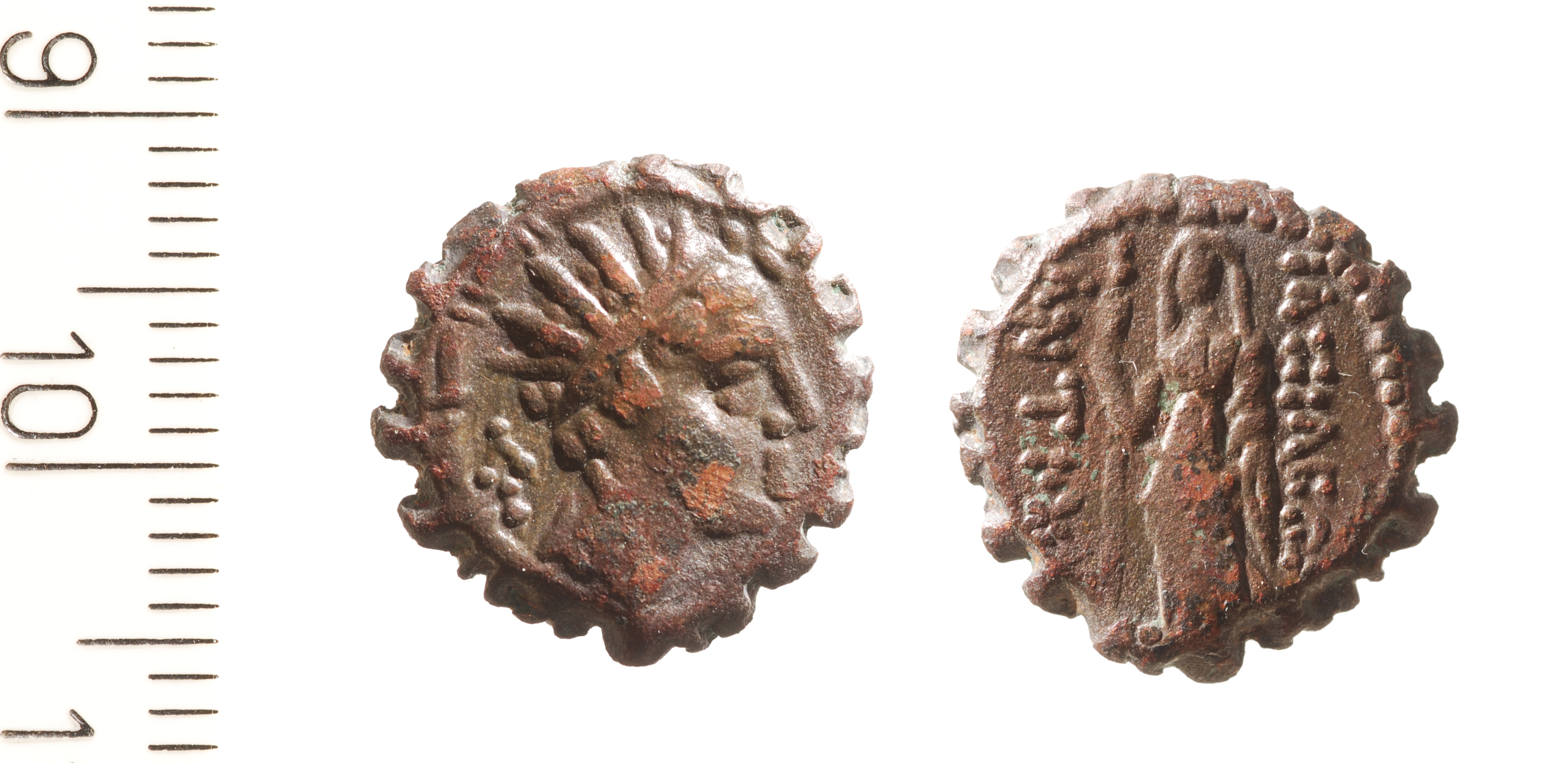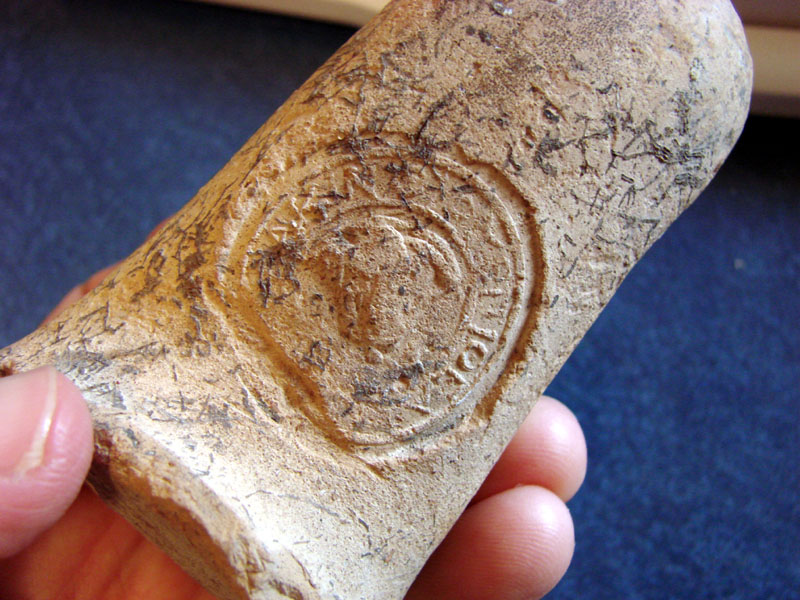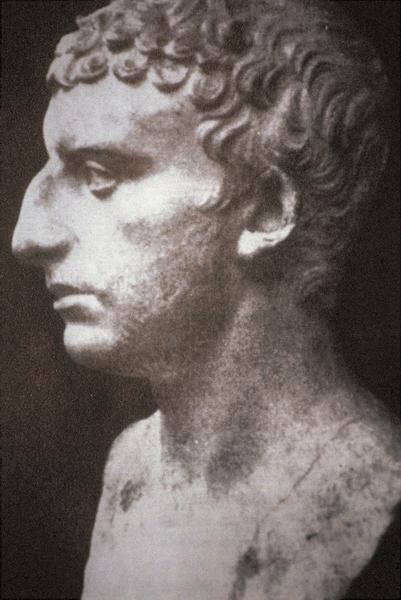Evidence of Greeks on the Temple Mount
It’s all Greek to Me
There are donuts EVERYWHERE and we are getting in the holiday season! As Channukkah approaches, we wanted to share with you one of our important finds relating to the Greeks on the Temple Mount. At the beginning of the project, we found a handle from an amphora that was stamped by an official from the Greek Island of Rhodes. This unique find from our sifting dates to the reign of Antiochus Epiphanes IV and constitutes a direct link to the Greco-Seleucid regime.

Coin bearing the image of Antiochus Epiphanes IV, the villain of the Channukkah Story. Found by the Sifting Project
The Amphora handle is stamped with a round Rhodian stamp showing the Rhodian Rose and surrounded by the Greek legend Ἐπὶ Θεαιδ̣[ήτου Ὑ]ακινθίου” – “during [the reign of the eponym] Theaidetos, [in the month of] Hyakinthios.” Theaidetos received one of the highest honors bestowed upon a government official, and the year was named after him. Because each official had the position of Eponym for only one year, dating artifacts marked with these symbols becomes very precise (though not perfect). Gerald Finkielsztejn dates Theaidetos to somewhere between 175-170 BCE which is during the reign of Antiochus IV Epiphanes, who looted the Temple treasury and introduced pagan worship to the Temple Mount.

Rhodian Amphora Handle found by the Sifting Project
About 1200 stamped amphorae handles have been found in excavations in Jerusalem, but this is the only one found within soil from the Temple Mount. (We have found other non-stamped amphora handles.) Our research on this handle indicates that it may be related to the founding of the Akra fortress, the headquarters of the Seleucid garrison, which was constructed not far from the Temple Mount shortly after the date on the amphora handle. The amphora, which was used for the import of non-kosher wine from the Island of Rhodes, could have served the non-Jewish residents of the Akra. It is interesting that although many of these stamped Greek amphorae handles have been found in Jerusalem, most sites dating to that period having at least a few, we have only found 1 in the last 12 years of sifting. This shows a lesser Greek influence on the Temple Mount itself, despite Antiochus’ idolatry on the Temple Mount.
Akra

Bust of Flavius Josephus
There is much debate in archaeology about where exactly the Akra was located. Both Macabees and Josephus talk about the fortress, but neither details its exact location. What we do know is that Antiochus IV Epiphanes built the Akra in 168 B.C. as a fortress for his Macedonian garrison from which the Jewish population could be controlled. Josephus records that it “commanded or overlooked the Temple.” In Antiquities 12.252, he writes that Antiochus:
“… built the Akra in the Lower City; for it was high enough to overlook the Temple, and it was for this reason that he fortified it with high walls and towers, and stationed a Macedonian garrison therein. Nonetheless there remained in the Akra those of the (Jewish) people who were impious and of bad character, and at their hands the citizens were destined to suffer many terrible things.”
It is important to remember that at that time, the Temple Mount was much smaller that that which we know today. The Second Temple, in its earliest form at the time of Nehemia through the Hellenistic period had a smaller, square shape. It wasn’t until Herod enlarged the platform and renovated the Temple around 20 BCE that the Temple Mount took the form that we know it in today.












Reblogged this on Kattukse Vrienden voor Israël.